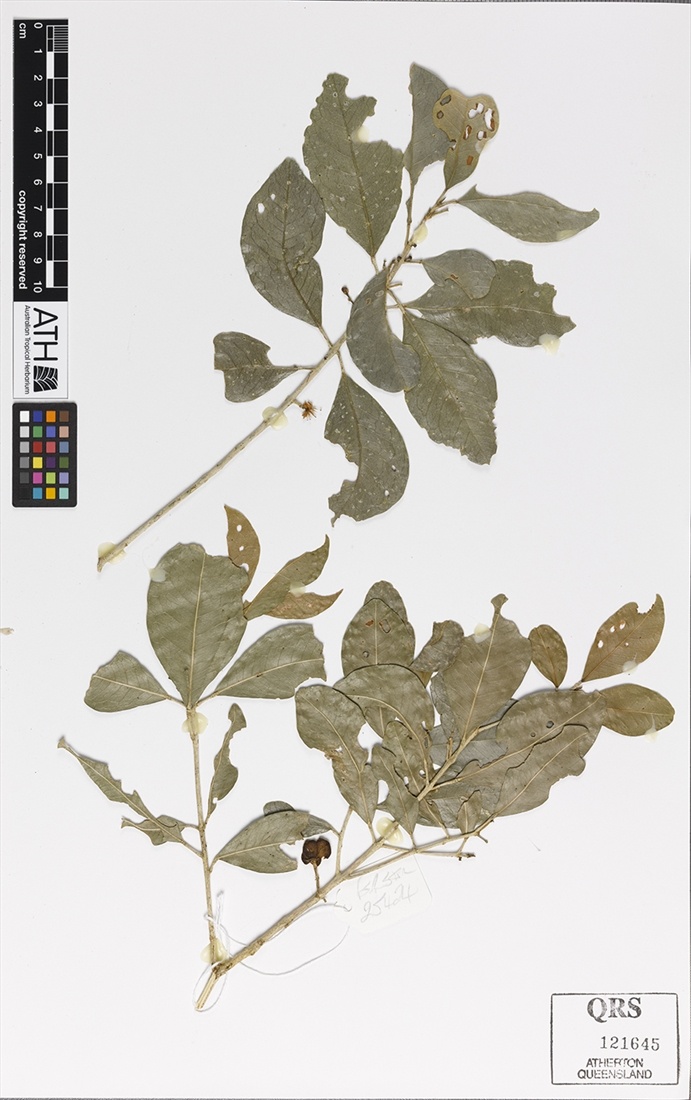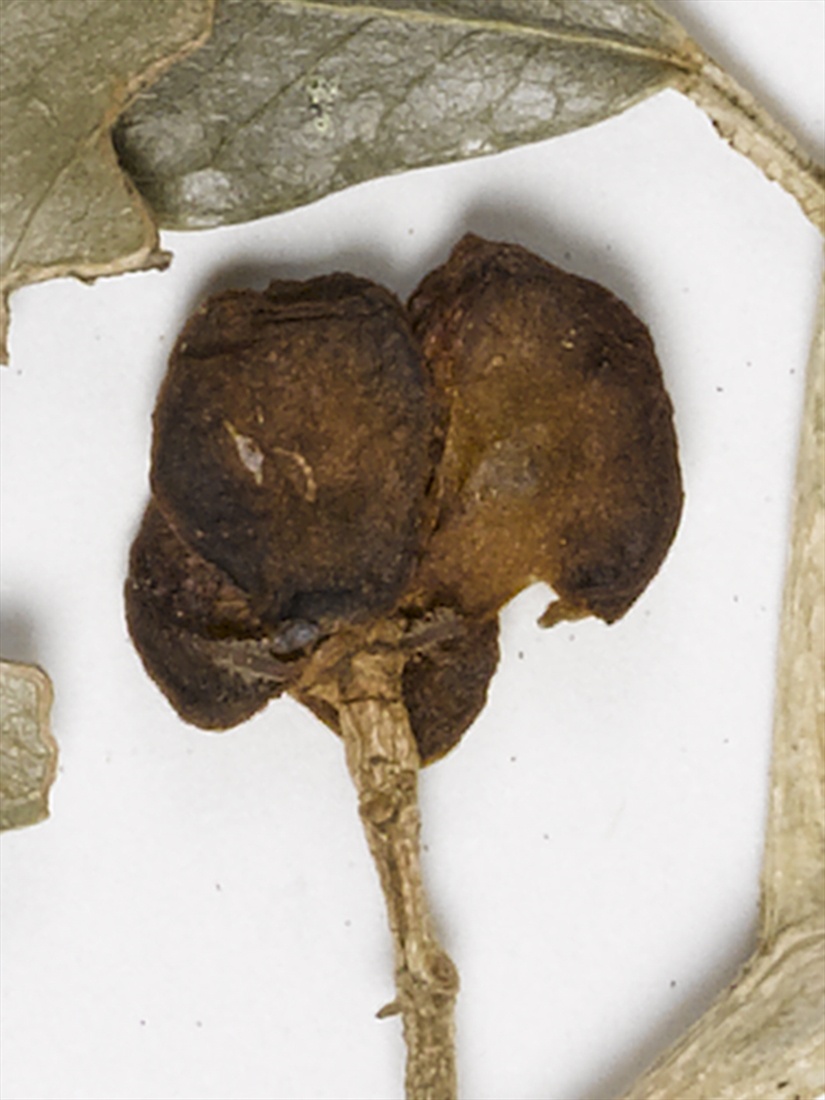Australian Tropical Rainforest Plants - Online edition
Acronychia pauciflora C.T.White



White, C.T. (1946), Proceedings of the Royal Society of Queensland 57: 21. Type: "Moreton District: Mt. Glorious, Mrs. M.S. Clemens (TYPE: fls.)".
Soft Acronychia, Few-flowered Acronychia
Shrub or tree to 10 m high; bark creamy-fawn, wrinkled to finely scaly. Young stems sparsely hairy, becoming hairless.
Leaves aromatic when crushed. New growth red to blackish. Leaves opposite and decussate on young stems, unifoliolate with an articulation at junction of leaf blade and petiole. Stipules absent. Petiole 4-20 mm long; with slight swelling at junction. Leaf blade elliptic to obovate, 2–10 cm long, 1–4.8 cm wide, base cuneate, margin entire, apex obtuse to acute, shallowly acuminate. About 7-12 main lateral veins on each side of the midrib. Oil dots visible with hand lens. Upper surface usually hairless and dark green, lower surface paler and sometimes sparsely hairy.
Inflorescence a few-flowered cyme, axillary or infrafoliar, to 1.2 cm long. Pedicels 0.6-2 cm. Flowers bisexual, actinomorphic, 4-merous. Sepals ± free, very widely ovate, c. 1 mm long. Petals free, lanceolate, 4–6.5 mm long, petals hooded on inner surface at apex, cream to greenish. Stamens 8, alternately unequal in length, filaments opposite petals shorter than filaments alternating with petals, filaments flattened with ciliate margins. Disk yellow. Ovary of 4 fused carpels, superior, ovary deeply grooved with septicidal fissures (crevices in line with internal septa of ovary). Style absent, stigma disc shaped at apex.
Fruit a fleshy drupe, subglobose, 4 lobed, 7–9 mm long, 7-9 mm wide, pale green to white. Fruit divided apically into 4 lobes with longitudinal fissures. Seeds 1 or 2 per lobe, 3–5 mm long, reddish black.
Features not available.
Occurs in CEQ, from near Mackay southwards to Lismore in New South Wales. Grows in subtropical rainforest, dry rainforest, vine thickets and Brigalow scrub.
This profile information and associated coding has been reproduced from Cooper & Cooper (2004), Harden et al. (2014), and Hartley (1974; 2013).
1250





